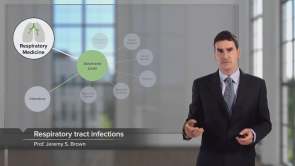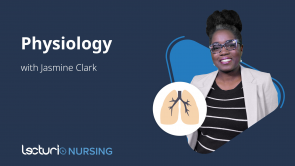Blood Vessels: Structures and Functions (Nursing)
Über den Vortrag
Der Vortrag „Blood Vessels: Structures and Functions (Nursing)“ von Jasmine Clark, PhD ist Bestandteil des Kurses „Cardiovascular System: Blood Vessels – Physiology (Nursing)“.
Quiz zum Vortrag
What is best description of the function of blood vessels?
- To be the delivery system of dynamic structures that begins and ends at the heart and work with the lymphatic system to circulate fluids
- To have direct contact with tissue cells and directly serve cellular needs
- To carry deoxygenated blood toward the heart except for pulmonary circulation and the umbilical vessels of a fetus
- To carry oxygenated blood away from the heart except for pulmonary circulation and the umbilical vessels of a fetus
What is the function of the veins?
- To carry deoxygenated blood toward the heart except for pulmonary circulation and the umbilical vessels of a fetus
- To be the delivery system of dynamic structures that begins and ends at the heart and work with the lymphatic system to circulate fluids
- To have direct contact with tissue cells and directly serve cellular needs
- To carry oxygenated blood away from the heart except for pulmonary circulation and the umbilical vessels of a fetus
What is the function of the arteries?
- To carry oxygenated blood away from the heart except for pulmonary circulation and the umbilical vessels of a fetus
- To be the delivery system of dynamic structures that begins and ends at the heart and work with the lymphatic system to circulate fluids
- To have direct contact with tissue cells and directly serve cellular needs
- To carry deoxygenated blood toward the heart except for pulmonary circulation and the umbilical vessels of a fetus
What is the function of the capillaries?
- To have direct contact with tissue cells and directly serve cellular needs
- To be the delivery system of dynamic structures that begins and ends at the heart and work with the lymphatic system to circulate fluids
- To carry deoxygenated blood toward the heart except for pulmonary circulation and the umbilical vessels of a fetus
- To carry oxygenated blood away from the heart except for pulmonary circulation and the umbilical vessels of a fetus
What are the terms for the 3 layers that most vessels have?
- Tunica intima, tunica media, and tunica externa
- Tunica intima, endothelium, and lumen
- Lumen, tunica intima, and tunica externa
- Tunica media, tunica adventitia, and tunica externa
What is an accurate description of the tunica intima?
- The innermost layer that is in "intimate" contact with blood
- The middle layer composed mostly of smooth muscle and sheets of elastin
- The outermost layer of the vessel wall
- The innermost layer composed mostly of smooth muscle and sheets of elastin
What is an accurate description of the tunica media?
- The middle layer composed mostly of smooth muscle and sheets of elastin
- The innermost layer that is in "intimate" contact with blood
- The outermost layer of the vessel wall
- The middle layer of the vessel wall, also referred to as the tunica adventitia
What is the best description of the tunica externa?
- The outermost layer of the vessel wall
- The middle layer composed mostly of smooth muscle and sheets of elastin
- The innermost layer that is in "intimate" contact with blood
- The outermost layer of the vessel wall composed mostly of smooth muscle and sheets of elastin
Diese Kurse könnten Sie interessieren
Kundenrezensionen
5,0 von 5 Sternen
| 5 Sterne |
|
5 |
| 4 Sterne |
|
0 |
| 3 Sterne |
|
0 |
| 2 Sterne |
|
0 |
| 1 Stern |
|
0 |










